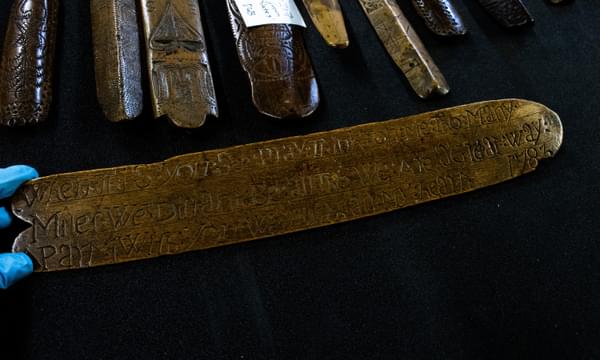News Story
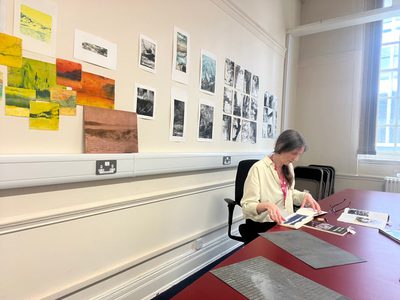
On my first day in the Birmingham Museum & Art Gallery studio, I realised there was no pressure or required outcome—an unusual experience in the art world. This made me feel suddenly lighter. What was I going to do with my time…
The answer, experiment with process and explore Birmingham's fine art archives, both works on paper and canvases. To see what artists in the collection had disabilities and how it influenced their work. This connects to my personal practice and my life as a disabled artist.
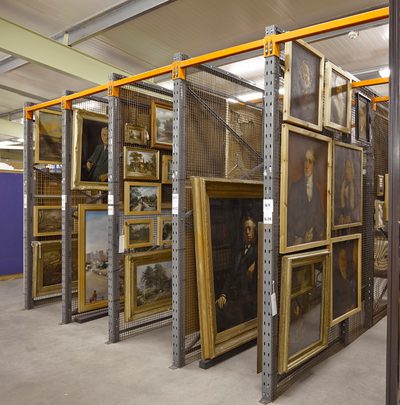
When I looked at Birmingham Museums' database, like many other places it brought up things relating to disability like an artificial leg etc, not artists whose disability gave them a unique perspective and influenced their artwork. So, I had to research these artists in a different way. Thinking about artists who had either informed my own practice or had similar conditions to me and then see if the gallery owned any of their work?
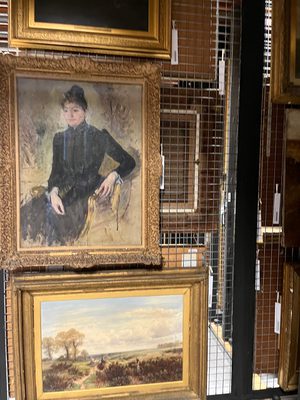
In my previous blog I mentioned how amazing it was to look at Rembrandt's prints and discuss with the public how he made his art, and that no he did not have 20/20 vision as so many presume.

I also feel a real connection with Edward Lear, I identify with his sense of isolation from the world, his fear of people finding out that he had epilepsy, and although there is 100 years between our lived experience so much stigma remains regarding epilepsy. But like me he found sanctuary in the landscape, a sense of calm. A peace that’s indescribable and is reflected in our work. He is the artist I’m most personally connected to, both for his creative skills and lived experience.
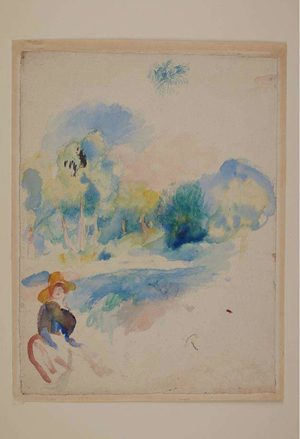
Watercolour La Campagne by Renoir reminds me of when I was blind. Although he was not visually impaired like myself, the soft colours and depiction of a landscape with no detail, evoke the memories of sight loss for me. Renoir was constantly adapting the way he approached his practice around his rheumatoid arthritis. Strapping a paint brush to his hand rather than giving up. He painted some of his best-known work during this time. I can identify with his need to adapt rather than give up. I've been adapting my whole life. Some might call us stubborn, others resilient but I’d say we are just passionate about our art and see no reason to stop, when you can just adapt the way, you work. Isn’t this just us creating our own Reasonable Adjustments in the workplace!
Another artist I looked at was Toulouse Lautrec, I’ve loved his prints for as long as I can remember. From their large imposing scale, vibrant colours to his artistic style. For me there is something truly mesmerising about his work.
I used this time not only to research artists but as a period to experiment with different styles, that reflect different periods of my sight loss.
From tactile collagraphs and embossed prints to expressive mono prints which capture the small, abstracted sections of the world I see. To the bold colours post eye surgery, this phase only lasts for a few weeks, but the colours are so vivid.
I relished my fellowship at Birmingham Museum & Art Gallery from the tranquil but mesmerising time spent in the archives, to the creatively stimulating period spent in the Rembrandt exhibition. The organised chaos of the accessible family embossed print workshop, to creating works both visual and written inspired by the artwork in the archives. I’ve had the pleasure to explore so many artists' works, too many to mention here.
Thank you to the whole Birmingham Museum & Art Gallery team for making me feel so welcome and to all the members of the public I’ve engaged with during this time.
If you would like to see examples of my work, please visit www.faekilburn.co.uk
By Fae Kilburn,
Artist in Residence.


